Web Development using Wordpress CMS – Template Development and Customizations
Wordpress is one of the most popular CMS used for millions of blogs, infact over 810 million of them as per latest reports in 2024. This accounts for 43.6% of all websites in the world. Wordpress is ideally suited for creating a Blog but can also be used for even fairly large websites as well as e-commerce websites that have an inventory of a few thousand products. In fact there are lots of webstores running on WooCommerce that have over 50,000 products.
The look and the feel of a Wordpress based site can be changed via "themes". We can create a Wordpress theme so that it can have the look and feel of our static website. You can have a simple acessible WordPress website in no time at all or a complex e-commerce website. The choice is yours.
For example below is the screenshot of a wordpress theme created as per the look and feel of old version of this website.
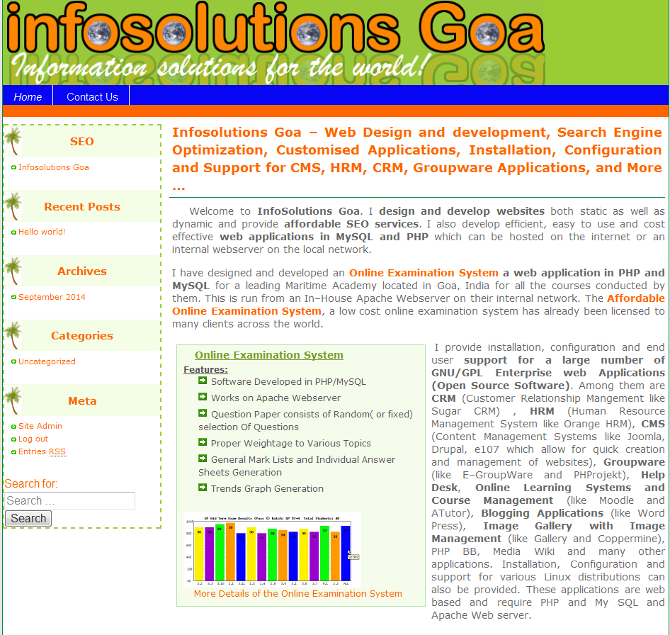
Installing Wordpress
Wordpress is simple to install. You have to make sure that your webhosting meets the minimum requirements. Besides that you need to keep the database details handy.
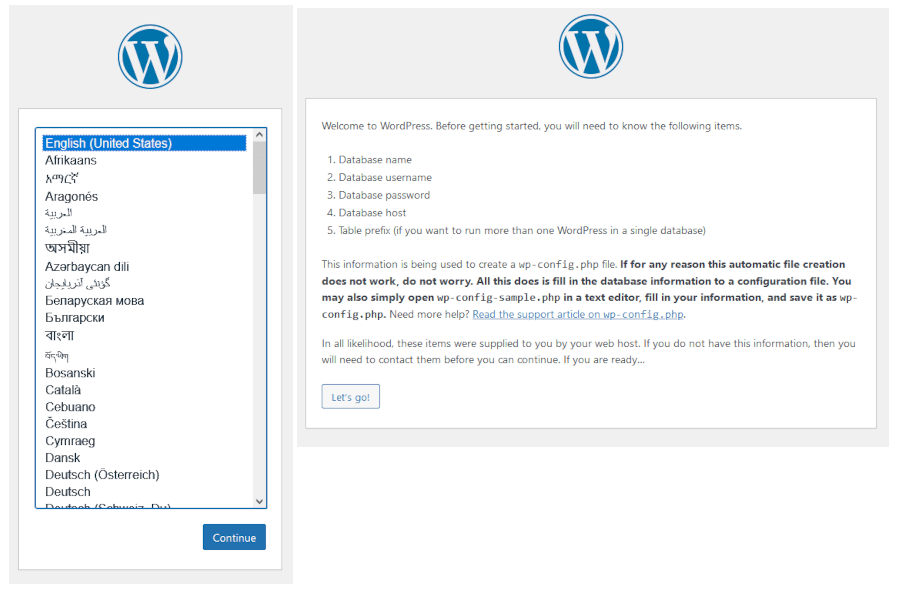
Creating The Database
Your webhosting will have some method of creating a database from the control panel. In case you are creating one from phpMyAdmin, you have to create an username and password and create a database of the same name as the username.
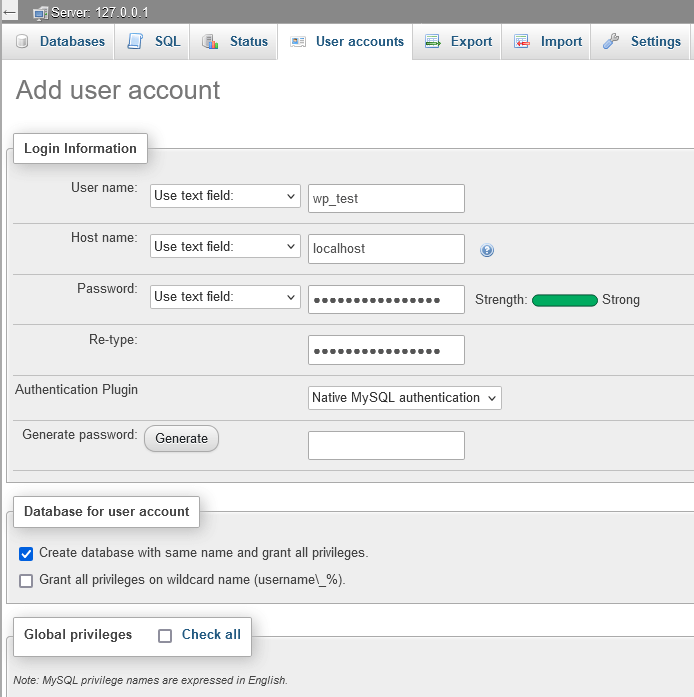
Completing WordPress Installation
Next up in the Wordpress install process is your Site Title, Username, Password and Email id. After you have specified this you are good to go. After a few minutes WordPress will be installed.
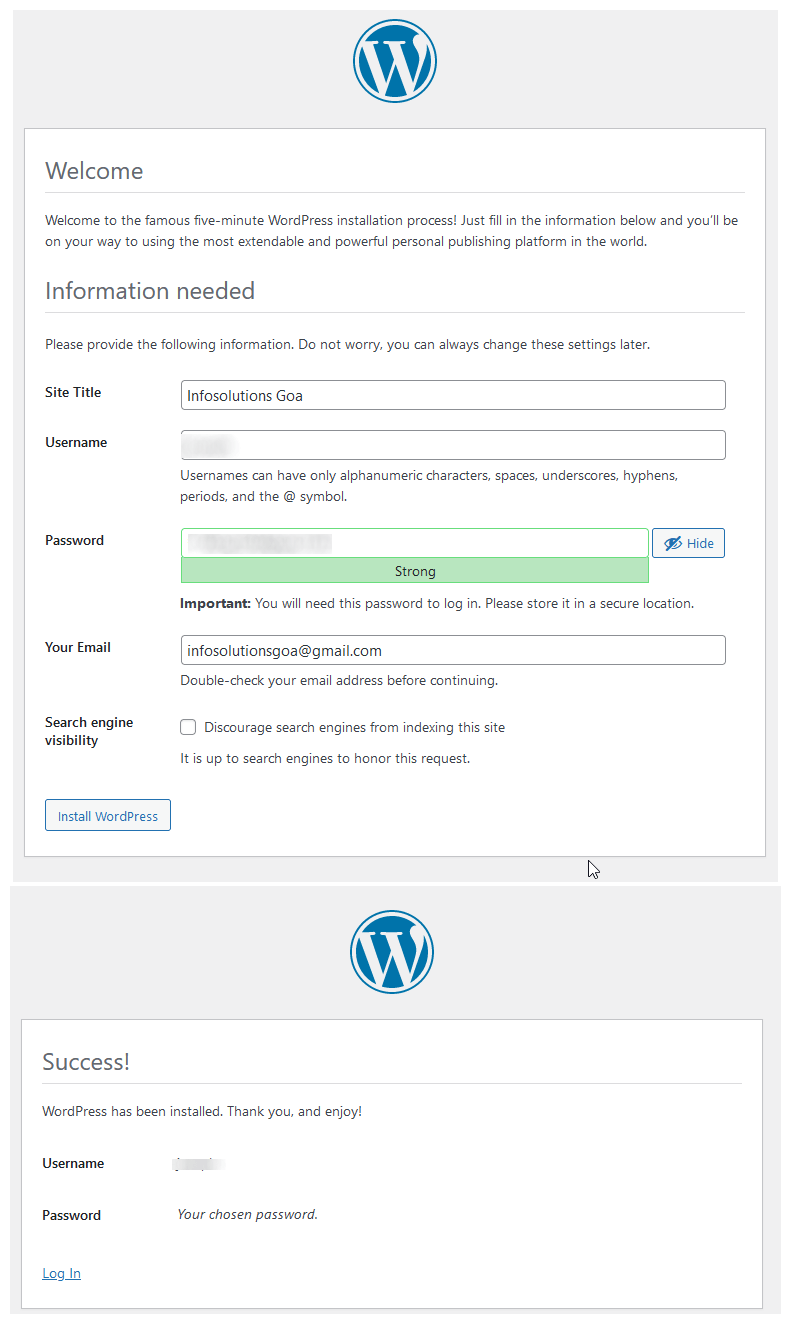
The Wordpress Theme Structure
A Wordpress template usually consists of the following parts - the header, the content, sidebar and the footer. All these parts are assembled by the file index.php (in the theme folder). If the theme contains two sidebars then both the sidebars will be loaded. For example the current look and feel of this website has been converted into a Wordpress theme. Wordpress themes can also be made responsive. For example the wordpress theme created with the same look and feel as this website is also responsive, just as the website. A brief mention of the various customisations possible in wordpress are described below.
The Title Display Customization
The title can be made to display only the name of the post and not Name of the post | Website Name
The display of the the title at the top of the the content in each page or post can also be turned off by commenting the line
<?php the_title( '<h1 class="entry-title">', '</h1>' ); ?> from content-page.php of your theme. There is also another way of customising the title.
The title can be customised and the meta description can be added by using a suitable SEO plugin, which is the easy and recommended way of doing things. The most popular is the Yoast SEO Plugin.
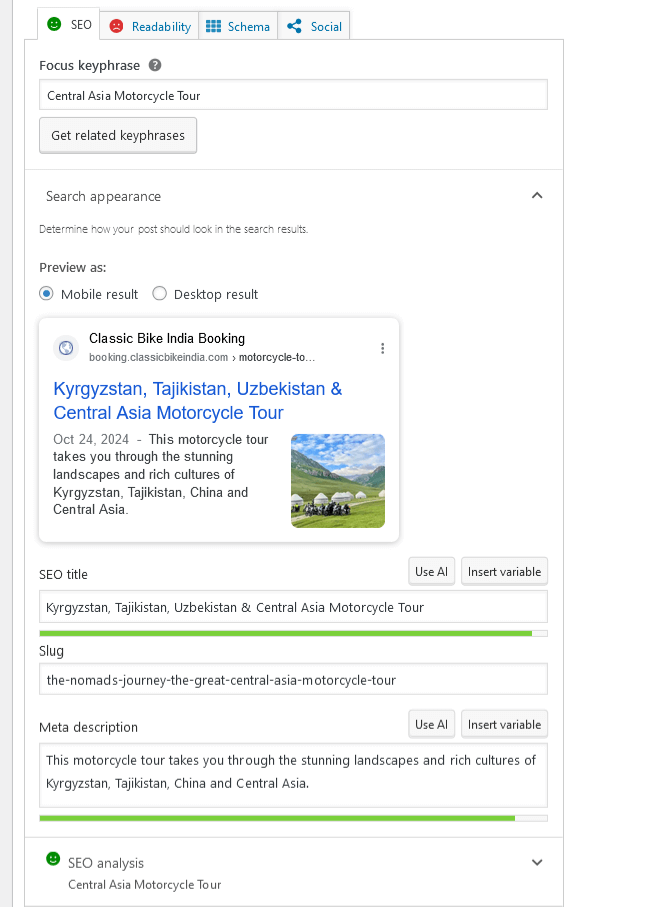
Turning off Comments
You can turn off comments on all your blog posts by unchecking "Allow people to post comments on new articles" under Settings >> Discussion In case you want to turn off comments from static pages or "pages, you'll have to remove or comment the code snippet "<?php comments_template(); ?>" from the page.php of your theme.
Creating a Static Front Page
You can choose a static page to be displayed as your front page. This can done from Settings >> Reading Settings and
then under Front Page Displays check A Static Page.
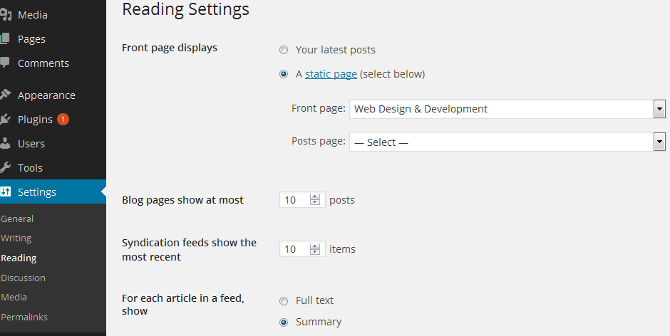
Menus
You can have a top menu as well as menus on the side bar. Menu items can be added and ordered from the dashboard, after logging
in as administrator. You will only be able to create a menu on the top if it is supported by your theme.
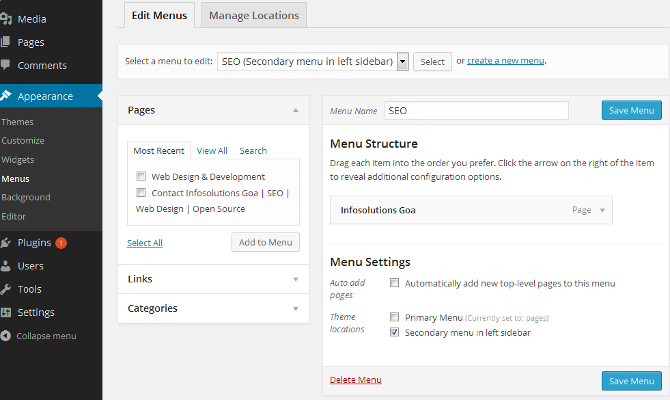
Wordpress Widgets and How to Customize the Meta Widget
You can choose which widgets should be displayed in the sidebar from Appearance >> Widgets. You can also create a custom menu to be displayed on the sidebar.
You can also customise the Meta widget by modifying code in default-widgets.php which is present in /wp-includes/
Adding and Editing Content
For easy editing of content (pages and posts) there is a WYSIWYG editor present in the default installation. You can upgrade the editor by means of an extension.
.
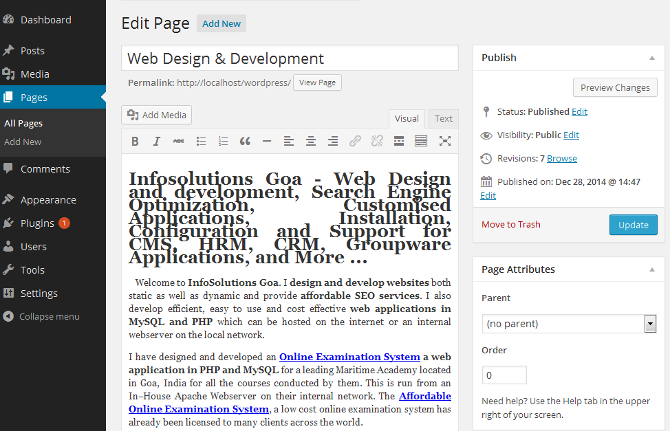
Features of Wordpress Content Management Systems (CMS):
- Runs on Apache web server with PHP and Maria DB or My SQL. Current version is Wordpress 6.8 which has been released during April 2025.
- Ideal for development of Blogs with upto thousands of pages, regular websites, or e-Commerce websites based on WooCommerce.
- Also suited for Tour Booking or Hotel Booking websites based on WooCommerce and an additional booking plugin.
- Facility to add or edit content via a simple browser based interface.
- Menu Items can be ordered as per requirement.
- After installing and activating an extension, a Wordpress site can have Search Engine Friendly URL's. Page names as well as titles can be customised.
- Look and Feel of your site is fully customisable via "Themes".
- Generates very clean code. Hence pages are generated relatively fast.
- Customised page titles can be used for each page so as to be appropriate to the content contained in that page.
- Customised page titles and descriptions can also be used if required by you by installing an SEO extension.
About The Author
Joseph de Souza is a leading Freelance SEO consultant and Web developer in Goa, India with more than 17 years of experience in internet marketing.
He has a proven track record and has has helped several companies increase their traffic many times over and thereby increase their revenue and profits.
Besides English, Joseph has also successfully optimized two German language websites and a Danish language website and obtained outstanding results.
